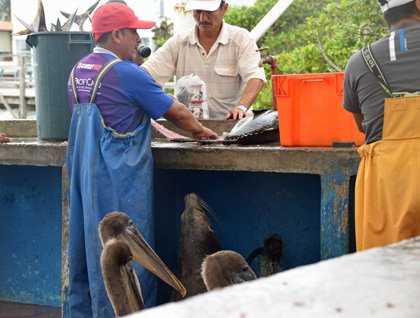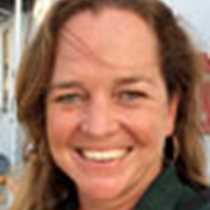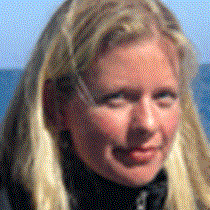We have spent the last few days exploring the central and western realms of the Galapagos Islands, during which time we have experienced wildlife encounters that surpassed our wildest expectations. Unforgettable sightings during nature walks, Zodiac rides and from the ship have included frigate birds courting, blue-footed boobies and flightless cormorants nesting, hawks hunting, adorable displays of mother-pup tenderness between sea lions and record numbers of cetaceans (orca, common dolphin, Bryde’s whales and even a total of six blue whales!). The sense of wonder and exhilaration among our fellow travellers, spanning several generations this week, has been palpable and contagious and continues to run strong.
During our expeditions we want our guests to get an appreciation for the whole picture, and as such, experience that the human aspect of the Galapagos is vital. We left the pristine areas of the archipelago behind last night and sailed due south-east to the second largest of the Galapagos Islands, located at the heart of the archipelago, Santa Cruz. Like most of the islands Santa Cruz was re-named in honour of Columbus’s voyage of discovery and the name is Spanish for “Holy Cross”. As is common in Galapagos, however, the island also has an English name given by earlier explorers, in this case Indefatigable after the British vessel HMS Indefatigable. We anchored in the main harbour of Santa Cruz, the famed Academy Bay that was named for the California Academy of Sciences which sent an expedition here in 1905.
Santa Cruz is the most populated of the Galapagos Islands due to its central location and the proximity to Baltra airport, and is the economic hub of the province. Settlement began in the early 20th century when settlers from the United States and Europe moved to the area between WWI and WWII. Before tourism became the main income (about 65%), the early settlers along the coast lived mainly off fishing (which now makes up about 3% of the total income) whereas settlers in the humid highlands dedicated themselves to cattle ranching and planted crops such as sugarcane, coffee, plantain, cassava, avocados, and citruses.
After visiting the famous Charles Darwin Research Station and learning about the captive breeding program that has resurrected many populations of that most emblematic of Galapagos species, the giant tortoises, we all had a chance to walk through the bustling, picturesque port town of Puerto Ayora. A great highlight of any visit to this town is the wonderful fisherman’s dock and market at the aptly-named Pelican Bay. Local fishing boats come in daily and fishermen and their wives sell their produce to locals all while trying to keep pelicans and sealions away! Always a good show.
We then set off to explore the highlands, starting with a visit to a traditional sugar cane mill located in the highlands called El Trapiche. This brief stop aimed to introduce us to the way of life of the early settlers in the archipelago through the Cabrera family that settled in the islands over 40 years ago. We learned about the produce obtained from sugarcane, which includes molasses and a potent “agua ardiente” (sugar cane rum). Alternatively, those among us with an interest in education got to visit the Tomas de Berlanga School in the highlands of Santa Cruz. The school was established in 1994 by community leaders in Puerto Ayora as an alternative to the local schools and aims to develop critical thinking, bilingualism, civic responsibility and environmental stewardship as the basis for building a society committed to the conservation of Galapagos. It opened with just one classroom and 20 students and today serves over 180 students ranging from four to eighteen years of age. The visit was particularly enjoyable as a cultural exchange between our kids on board visiting from the US and the kids from the Galapagos Islands.
After lunch at a beautiful restaurant in the highlands and a subsequent expedition to find the huge giant tortoises of Santa Cruz, we returned on board after yet another day of enriching, unforgettable experiences.









